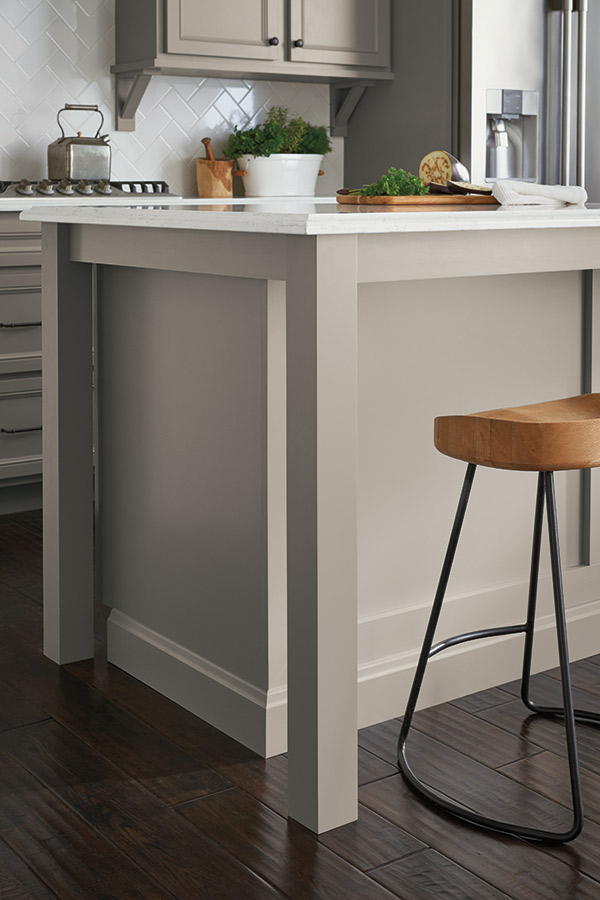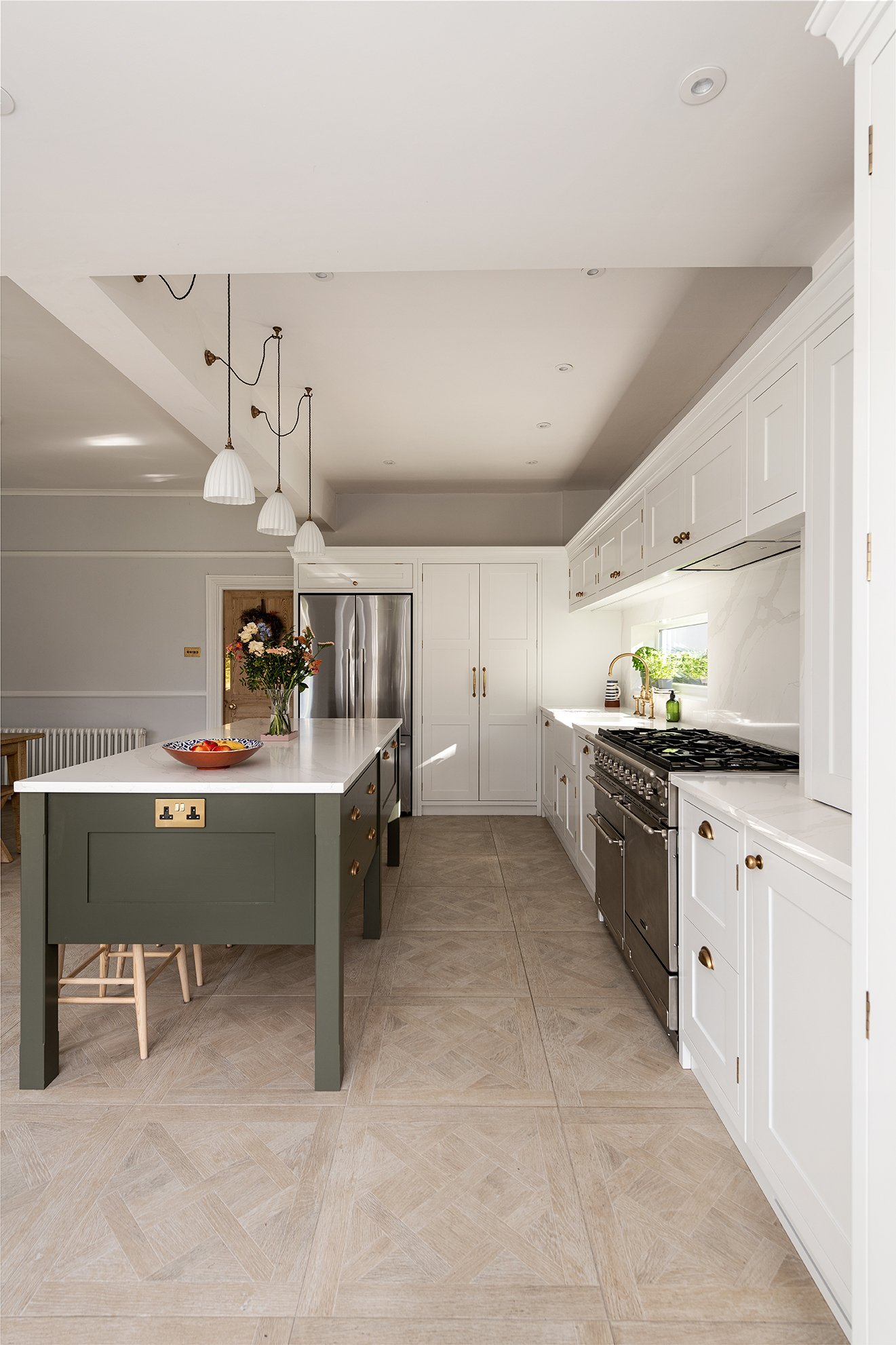Personalize Your Kitchen Look with Special Legs For Kitchen Island Alternatives
Key Considerations for Locating the most effective Legs For Kitchen Island for Your Layout
When picking the suitable legs for your kitchen area island, several vital considerations enter into play that can dramatically affect both performance and visual appeals. The choice of height, product, and style have to line up with your total kitchen area layout to guarantee a harmonious appearance. In addition, security and maintenance requirements are critical for long-term usage and ease of care. Understanding these variables can improve your cooking area's practicality and aesthetic appeal, however the subtleties of each consideration can usually be neglected. What effects might these choices carry your cooking area's overall environment?
Determine Your Style Preference
When choosing the optimal legs for your kitchen area island,Establishing your design choice is critical. The legs of your cooking area island not just offer a useful objective yet additionally add dramatically to the overall aesthetic of the area. For that reason, determining your design style-- be it modern-day, rustic, conventional, or industrial-- is essential.
For a contemporary cooking area, take into consideration sleek, minimalistic legs that enhance clean lines and open spaces. In comparison, a rustic setting may take advantage of even more robust, farmhouse-style legs made of reclaimed products. Standard kitchen areas typically favor transformed or elaborate legs, which can add a touch of elegance and refinement. A commercial aesthetic might call for steel legs that emphasize a raw, incomplete appearance.
Furthermore, think about the elevation and percentage of the legs in connection to the island's surface area. Eventually, your style choice will influence not just the selection of legs but also the general harmony of your kitchen area's style.
Pick the Right Product
Picking the appropriate product for your cooking area island legs is pivotal in guaranteeing both toughness and visual allure. Numerous products use unique benefits, and the option commonly shows your style choices and useful needs.
Timber is a prominent option, supplying warmth and flexibility. It can be stained or painted to match your cooking area style, making it versatile to different styles, from rustic to contemporary. However, timber might need regular maintenance to maintain its look and stability.

If you look for an unique touch, think about acrylic or glass materials. They can produce an impression of area and agility in your cooking area, making them an outstanding option for smaller areas - Legs For Kitchen Island. These choices might call for careful handling and maintenance to prevent scrapes.
Inevitably, the material you choose ought to line up with your cooking area's total design, guaranteeing that the legs serve both practical and attractive purposes.
Consider Height and Proportions
When designing a kitchen island, height and proportions play a crucial role in ensuring functionality and comfort,. The standard height for a cooking area island typically varies from 36 to 42 inches, straightening with standard counter elevations or bar heights, respectively. This dimension is vital for integrating with bordering stools and countertops, enabling convenience of usage during meal prep work and social communications.
Additionally, the island's percentages must enhance the general kitchen design. Consider the proportion between the island's size and length, ensuring it gives ample surface location without crowding the cooking area.
In addition, the elevation of the legs or base can affect the visual appeal and capability. Taller legs might provide a more contemporary, airy feel, while much shorter ones can evoke a typical, grounded look. Ultimately, very carefully considering height and percentages will lead to a cooking area island that is both functionally effective and aesthetically appealing, improving the total layout of the space.
Assess Security and Durability
A cooking area island's legs should not just enhance its height and proportions however additionally offer appropriate security and durability to support everyday tasks. The legs are important to the general performance of the island, as they birth the weight of the kitchen counter and any additional tons, such as home appliances or food prep work jobs.
When assessing stability, it is important to think about the leg layout and product. Strong steel or strong hardwood legs commonly use remarkable toughness contrasted to lighter products like crafted wood or plastic. Additionally, a broader base can improve stability, minimizing the danger of wobbling or tipping during usage.
Durability is equally important; the legs need to stand up to deterioration from day-to-day usage. Think about surfaces that safeguard against scrapes, damages, and wetness, particularly in a kitchen atmosphere. Review the high quality of building and construction, such as attachments and joints, which can considerably influence the legs' lasting efficiency.
Eventually, buying well-crafted legs that focus on stability and resilience will certainly guarantee your kitchen island continues to be a reliable work space for many years to come, boosting your culinary experiences while keeping aesthetic allure.
Consider Upkeep and Care
Upkeep and care are critical factors to consider for ensuring the long life and performance of kitchen area island legs. When selecting legs, it is crucial to assess the products used, as various options need differing levels of upkeep. Wooden legs may call for periodic refinishing or securing to prevent wetness damages and scrapes, while metal legs may need normal brightening to maintain their luster and stop corrosion.
Moreover, the surface used to the legs can affect upkeep demands. A high-gloss finish might be simpler to clean however can reveal scratches and fingerprints a lot more conveniently than a matte coating. It is advisable to choose materials and surfaces that match your way of life; as an example, if you regularly organize celebrations, select durable materials that can hold up against damage.
In addition, take into consideration the cleaning procedure entailed in keeping these legs. Smooth surfaces often call for very little effort, while detailed layouts might build up dust and crud, click for info demanding even more labor-intensive cleansing approaches. Legs For Kitchen Island. Inevitably, considering the maintenance and care required for your chosen cooking area island legs will certainly not just improve their aesthetic allure however likewise ensure their functional integrity over time
Verdict
To conclude, choosing the ideal legs for a kitchen island necessitates mindful factor to consider of different elements, consisting of layout style, material choice, upkeep, height, and security. Each aspect plays an important role in making certain that the legs not only enhance the visual appeal of the cooking area however also give the required support and longevity for daily usage. A knowledgeable decision will eventually contribute to a useful and visually pleasing cooking area environment.
The legs of your cooking area island not only offer a functional objective however additionally contribute dramatically to the general visual of the space.Upkeep and care are important considerations for making sure the longevity and efficiency of cooking area island legs. Wooden legs might call for regular refinishing or securing to prevent wetness damages and scratches, while metal legs might need regular brightening to keep their shine my sources and protect against corrosion.
Ultimately, factoring in the maintenance and care required for your selected kitchen area island legs will certainly great site not just enhance their aesthetic allure but likewise guarantee their useful integrity over time.
